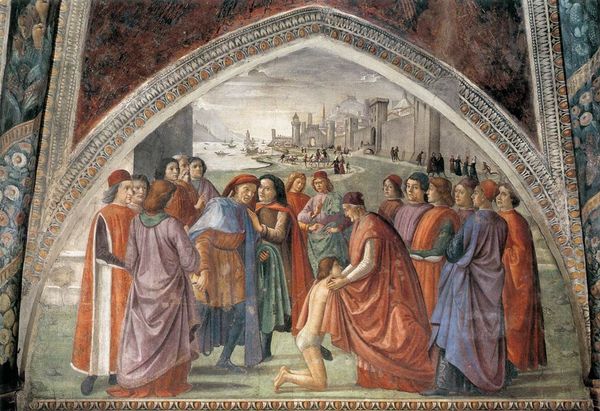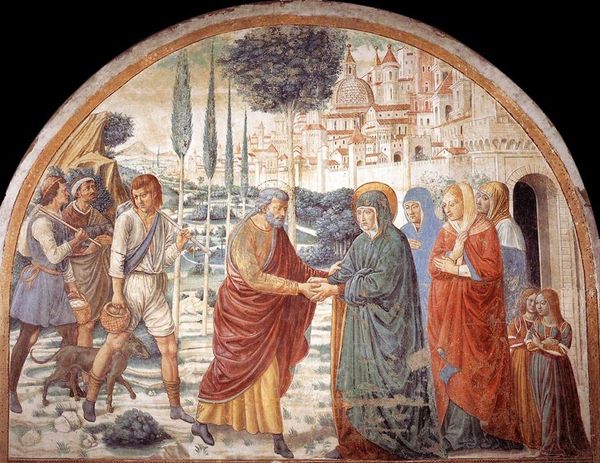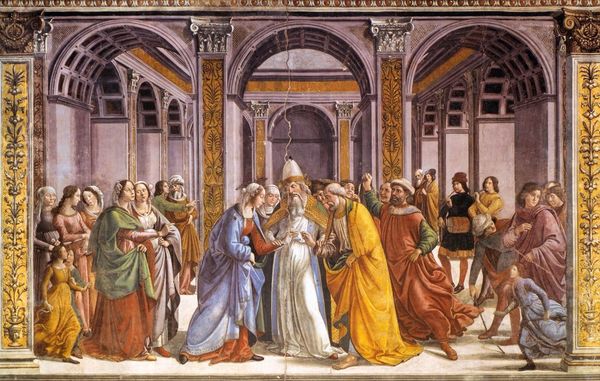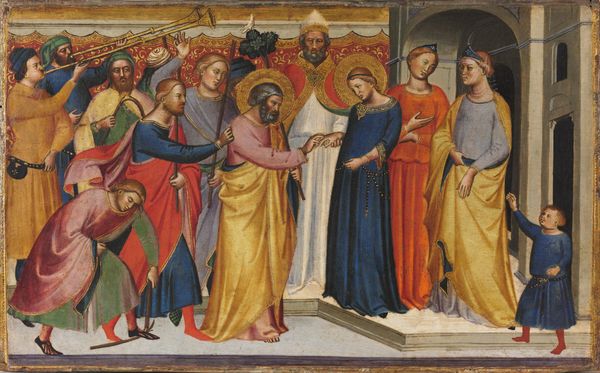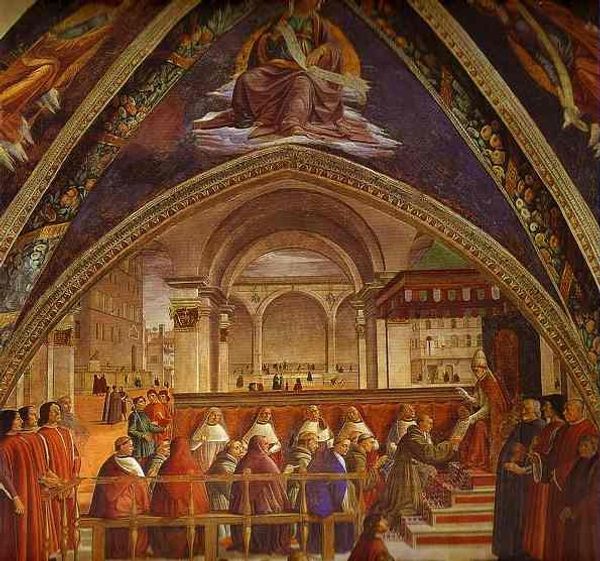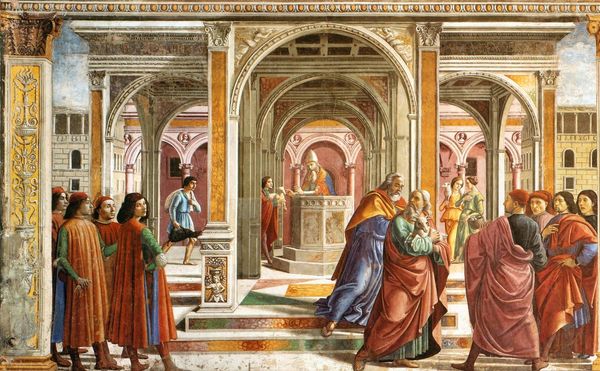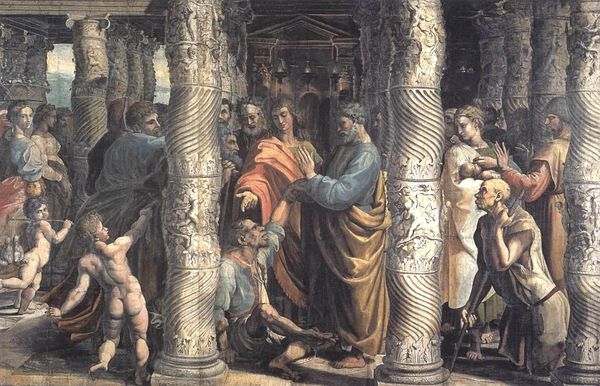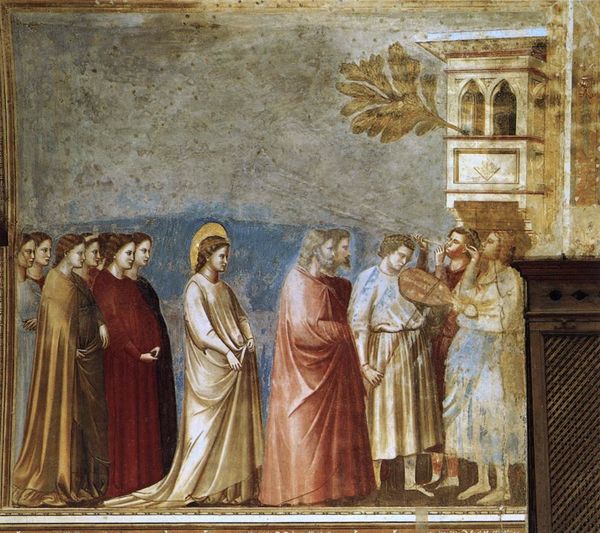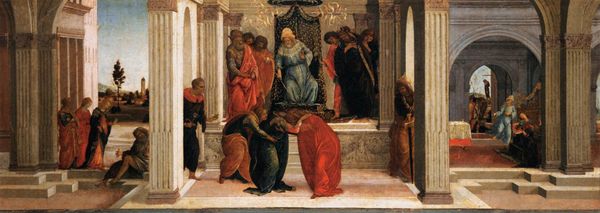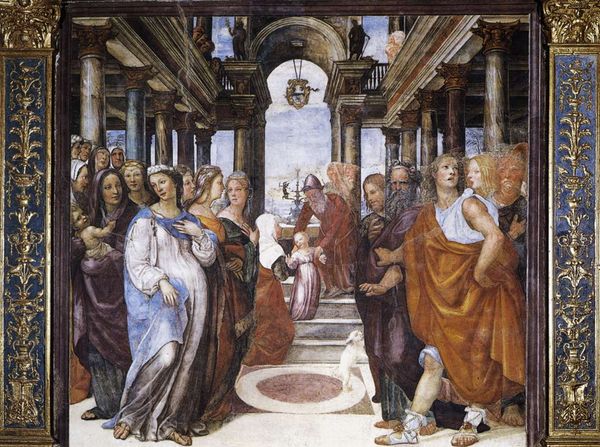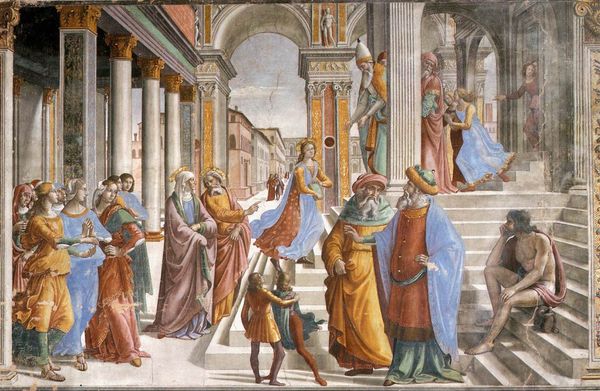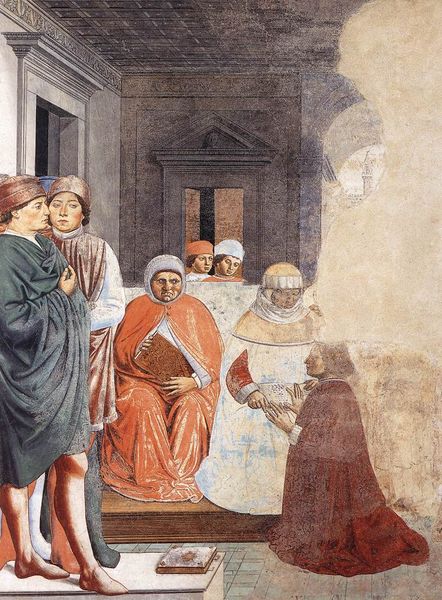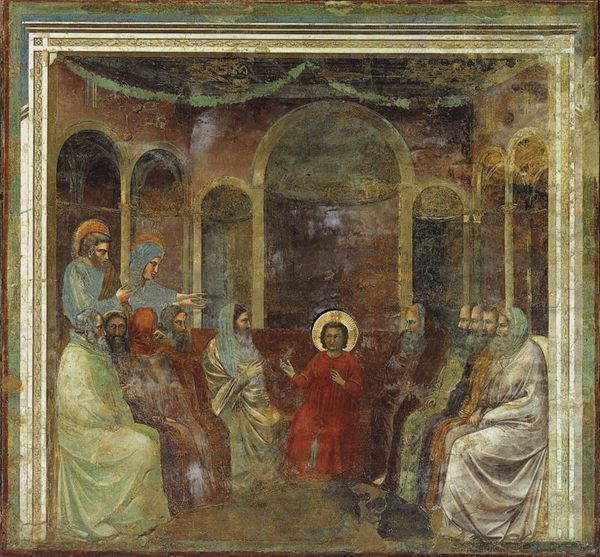
painting, fresco
#
narrative-art
#
painting
#
prophet
#
sculpture
#
holy-places
#
perspective
#
sculptural image
#
figuration
#
historic architecture
#
fresco
#
traditional architecture
#
classicism
#
christianity
#
history-painting
#
academic-art
#
italian-renaissance
#
early-renaissance
#
historical building
#
statue
#
christ
Copyright: Public domain
Curator: Benozzo Gozzoli painted this fresco, entitled "Tabernacle of the Visitation: Expulsion of Joachim from the Temple," in 1491. My immediate reaction is a certain sense of organized chaos; the receding architecture is precise, but the human figures appear agitated. Editor: Agitation certainly resonates. Look at the physical expulsion itself! Joachim, dressed in robes of a distinct red, is being pushed from the temple—a space traditionally associated with serenity. His upraised hands and the harsh gesture from the priest next to him scream social injustice, perhaps a commentary on the marginalization of those deemed unworthy. Curator: Indeed. The linear perspective guides our eye deep into the architectural space, while the clustering of figures directs our focus to the central narrative moment. There's a dynamic contrast here between the rigid geometry and the emotionally charged human drama. The colors, predominantly blues, reds, and golds, adhere to a specific visual order— Editor: But is that order comforting, or oppressive? Note the clear delineation of social status encoded within the clothing. The textures might signal not only artistic skill but material wealth versus visible markers of impoverishment, reflecting class biases present in Renaissance Florence, maybe even speaking to broader inequalities perpetuated by religious institutions? Curator: You're highlighting valid socio-political undercurrents, but I'm also struck by Gozzoli's mastery of visual space, which uses atmospheric perspective, rendering the background cooler to enhance the depth of the scene. I would suggest looking closely at the treatment of drapery—see how he sculpts with light and shadow, a testament to his painterly skill. Editor: The treatment of drapery is notable but I am still grappling with Joachim's ejection. Here is a man of presumed faith facing humiliation. And considering the period, where visual art often reinforced existing power structures, could it subtly be questioning priestly authority, a whisper against unquestioned norms? Curator: It certainly invites various readings, doesn't it? The beauty here lies in Gozzoli's technical acumen to arrange the various components and how they give way to a layered narrative and how its structure leads viewers into a complex and thought-provoking space. Editor: Precisely! The piece is more than just pretty aesthetics; it's a tableau of human experiences woven into the socio-political fabric of the late 15th century. Examining its visual and historical layers grants a glimpse of art's function within shifting structures of belief.
Comments
No comments
Be the first to comment and join the conversation on the ultimate creative platform.
